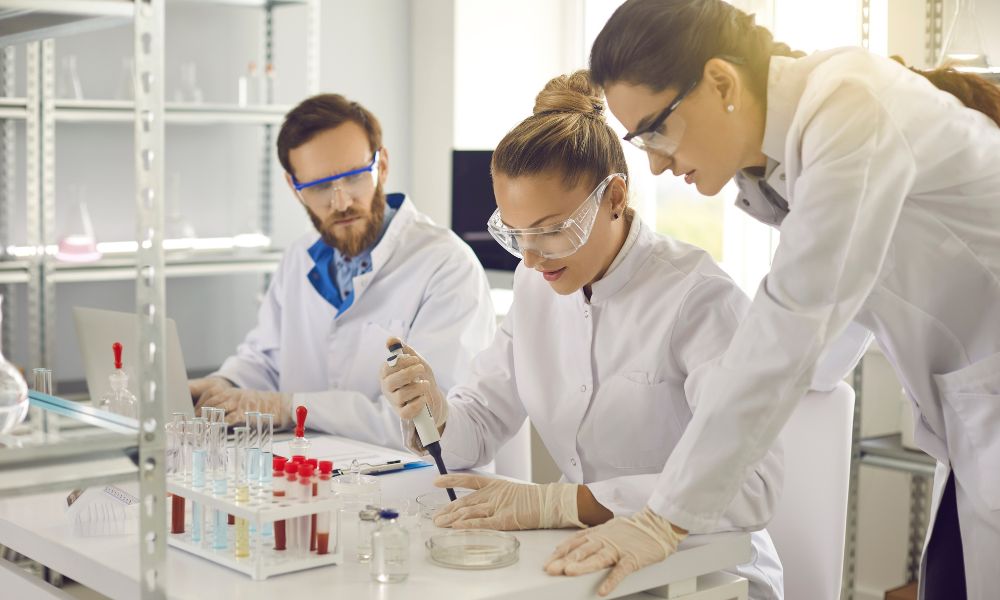
 press-releases
press-releases 
Before a drug is suitable for consumption, medications require vigorous testing. This article discusses how chemists create new medicines and other aspects of drug development. Learn how medicines go from laboratories to pharmacies with this guide!
Drug discovery relies on collaboration from researchers, chemists, biologists, and physicians. However, chemists build molecules that become the structure for new drugs. Biologists investigate the molecules that cause specific diseases. Together, they select molecule compounds that can target diseases.
Chemistry is critical in drug development because professionals can decipher molecular interactions between diseases and new drugs.
Drug discovery is like securing a key (the medicine) to open the disease’s lock. The goal is to fully investigate compounds and discover which disease(s) they can cure. The only way to determine drug effectiveness is through testing and clinical trials, which can take years!
Clinical trials are research studies that test medical interventions in people. These trials test how treatments affect human health. Before clinical trials, chemists must test drugs for purity, safety, and efficiency. After all, no one wants adverse side effects or accidental deaths!
Fortunately, chemists can use various purity testing methods to determine a medication’s efficacy. HPLC is ideal for chemical purity testing because it proves that substances don’t have contaminants. High-performance liquid chromatography (HPLC) lets chemists separate chemicals and remove impurities. Then, drugs are safe for clinical trials.
Human cells are more complex than any other cell in a laboratory. Therefore, scientists can evaluate how humans respond to new medicines. In clinical trials, scientists choose candidates based on their health conditions. For instance, they’ll choose patients with type 2 diabetes for a new diabetic medication. After all, this medicine can benefit people from this specific group.
Typically, there are three clinical trial rounds, each with more participants. Round one may include 20 to 100 candidates, round two has 100 to 500 people, and round three has 1,000 to 5,000 participants. Scientists can seek licensing approval if the drugs offer effective results.
Scientists submit their data and results to regulatory agencies. The agencies evaluate the results, laboratory practices, and other related information to ensure the new medicine is safe. Manufacturers can distribute them when the agencies approve the new medicines.
The road to drug development is long but worth it. Chemists create new medicines through drug discovery, purity testing, and clinical trials. All their efforts optimize the healthcare industry and improve society.
24World Media does not take any responsibility of the information you see on this page. The content this page contains is from independent third-party content provider. If you have any concerns regarding the content, please free to write us here: contact@24worldmedia.com